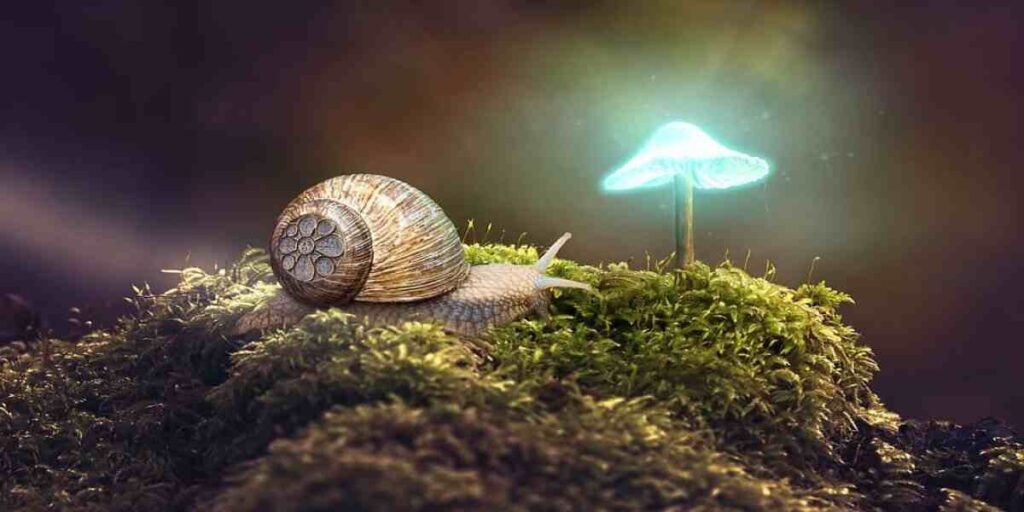
Mystery snails are popular freshwater snails known for their striking appearance and unique behavior. An interesting question that often arises among snail enthusiasts is whether mysterious snails shed their shells. In this article, we’ll explore the mystery snails shed their shells and explore whether the mysterious snails go through a process of shedding.
Snail Shells
Snail shells are an integral part of their anatomy. They provide protection and support and serve as a habitat for the snail.
Snail shells are mainly composed of calcium carbonate, which is secreted by the snail membrane, a specialized tissue responsible for the formation of the shell.
Snail Shell Growth
Snail shells grow through a process called accretion. As the snail grows, its membrane continuously deposits new layers of calcium carbonate on the inner surface of the shell.
This gradual accumulation of material results in the expansion and elongation of the shell, accommodating the snail’s increasing size.
Mystery Snail Shell Growth
Mystery snails, like other aquatic snails, exhibit continuous shell growth throughout their lives.
However, unlike some land snail species, mystery snails do not shed or discard their shells. Instead, their shells grow in a continuous spiral pattern.
Shell Damage and Repair
Although mysterious snails do not shed their shells, they are capable of repairing and regenerating damaged shell areas.
If the mysterious snail’s shell is cut, broken, or shed, the snail shell will deposit extra calcium carbonate to repair and strengthen the damaged areas. Over time, the new shell material fuses with the existing shell, effectively repairing the damage.
Factors Affecting Shell Growth
Several factors can affect the growth and condition of the shell of a mysterious snail. These include:
Diet
A balanced diet rich in calcium is essential for healthy shell development. Calcium is an important component of shell formation, so it is important to provide snails with calcium-rich foods such as algae, vegetables, and commercial snail food.
Water Chemistry
Proper water chemistry is critical to shell health. Maintaining a suitable pH level (about 7.0-8.0) and water hardness ensures the availability of calcium ions necessary for shell growth.
Stress and Disease
Stress and certain diseases can adversely affect shell growth. Snails that are subjected to prolonged stress or disease may exhibit slow or arrested shell development.
Shell Cleaning and Care
Although mystery snails do not shed their shells, it is important to maintain the health and cleanliness of their shells. Inspect shells regularly for any signs of damage, cracks or erosion. Using a soft, non-abrasive cloth or brush, gently clean off any algae or debris that has accumulated on the shell. Avoid using harsh chemicals or abrasive materials that may damage the shell.
Do mysterious snails grow their shells
No, mysterious snails do not come out of their shells. Their shells continue to grow throughout life as the snail grows in size.
The snail’s mantle, a specialized tissue, deposits new layers of calcium carbonate on the inner surface of the shell, allowing it to expand and accommodate the snail’s growth.
How often do snails shed their shells
Snails, including mystery snails, do not shed their shells. Unlike some species of land snails, aquatic snails such as mystery snails do not undergo shedding. Instead, their shells continue to grow in a spiral pattern as the snail grows.
How do you know if mystery snails are unhealthy
Several signs can indicate that mysterious snails may be unhealthy:
Shell Damage
Look for cracks, chips, erosion, or unusual damage to the shell. Damaged shells can be a sign of poor health or improper shell development.
Inactivity or lack of movement
Healthy snails are usually active and move around the aquarium. If a mysterious snail remains motionless for long periods of time or shows minimal activity, it may indicate an underlying health problem.
Abnormal color or texture
Look for any changes in the color or texture of the snail’s body or shell. Abnormal discoloration, spots, or a thin texture can indicate health problems.
Loss of appetite
If a mysterious snail suddenly stops eating or shows a significant loss of appetite, it could be a sign of illness or stress.
Odor or discharge
An unpleasant odor or unusual discharge from the snail’s body can be a sign of a bacterial or fungal infection.
If you notice any of these symptoms, it’s important to investigate the cause and take appropriate action to address the snail’s health concerns.
Why is my snail shell breaking
There are several possible causes of snail shell cracking:
Physical damage
Sharp objects or rough tank decorations can damage the shell if the snail comes into contact with them. Snails can also be crushed or injured by other tank inhabitants.
Calcium deficiency
Insufficient calcium in water or food can weaken the shell, causing it to break down or become deformed.
Water quality issues
Poor water quality, such as high levels of ammonia or nitrates, can negatively affect snail health and shell integrity.
Shell disease or infection
Some shell diseases, such as shell rot or fungal infections, can weaken the shell and make it prone to cracking.
You May Also Like:
Conclusion
Mysterious snails, like other aquatic snails, do not shed their shells. Instead, their shells continue to grow throughout their lives. Understanding the development and maintenance of snail shells helps us appreciate the fascinating nature of these creatures. By providing proper nutrition, maintaining proper water conditions, and monitoring shell health, you can ensure that your mysterious snails thrive while exploring their aquatic world with their unique and beautiful shells.